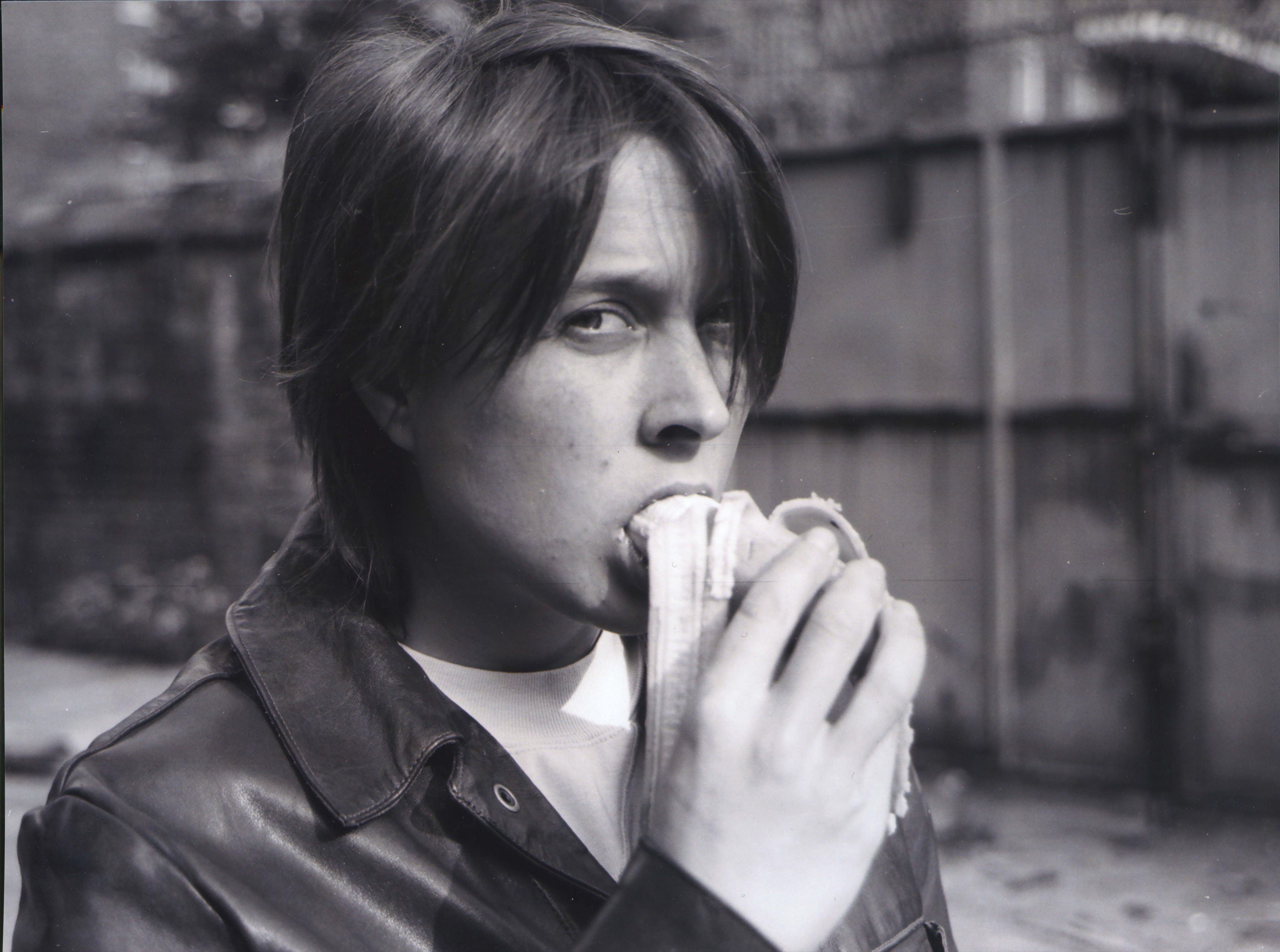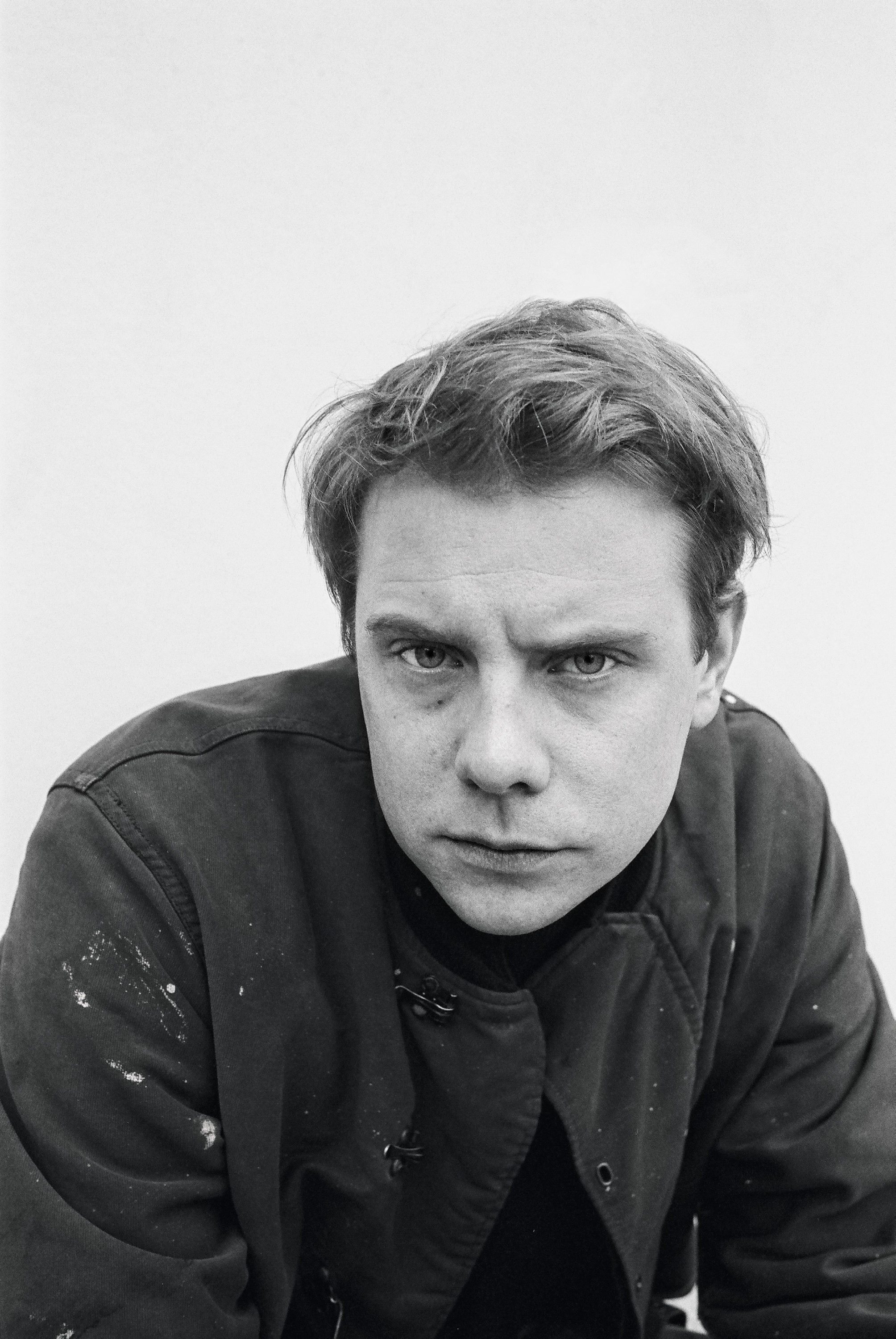WALLET MAG’S SHAMANS of SPACE: Curator MATTHEW LINDE Combines the Boutique and the Club
|Jeppe Ugelvig
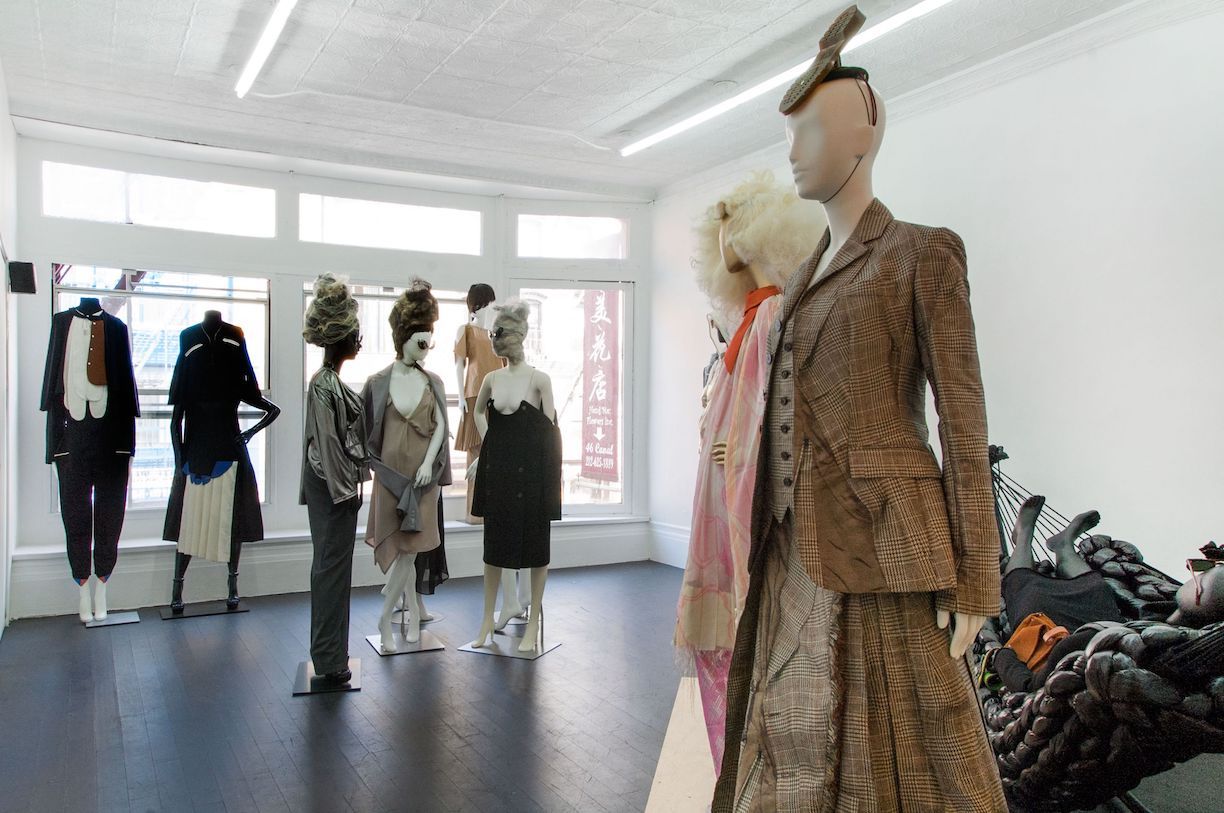
For the new issue of Wallet magazine – a pocket-sized enquiry into the theory, business, and politics of the fashion industry – editor-in-chief Elise By Olsen and her team set out to interrogate the relationship between fashion and space. Across three interviews and a “visual essay,” the fourth iteration of the publication, titled “Shamans of Space,” goes in search of the places where fashion happens: the creative zones of the studio and production warehouse, runway installations and boutiques, and on to the afterlife of garments in a “museum-mausoleum,” or in the trash.
“Today, most fashion involves a hybrid definition of space where fashion ‘takes’ place on several different platforms simultaneously: physical, virtual and somewhere in between,” By Olsen explains. “It could be at the workshop or it could be on your computer. It might be on your mobile and it might be at MoMA.”
The issue features interviews with Grace Wales Bonner, who prefaced her Fall/Winter 2019 collection with a research-oriented exhibition at the Serpentine Gallery in London, and OMA/AMO partner Ippolito Laparelli, an architect at the heart of the Dutch architectural giant’s series of runway, commercial, and art presentations for Prada. Lastly, Wallet spoke to Matthew Linde, an Australian fashion researcher, exhibition-maker and writer, currently undertaking a PhD at the School of Fashion & Textiles, RMIT University in Melbourne, studying the boutique as a site to “perform fashion.” Linde founded the mobile exhibition space and fashion boutique Centre for Style (2013-2016), and has curated several exhibitions on fashion and its complex histories. In the interview that follows, conducted by curator and critic Jeppe Ugelvig and excerpted from Wallet #4, Linde explains how a fashion boutique might function like a club night, explores the runway’s origins and art-adjacent present, and offers proposals for keeping clothes “alive” in an archive or museum.
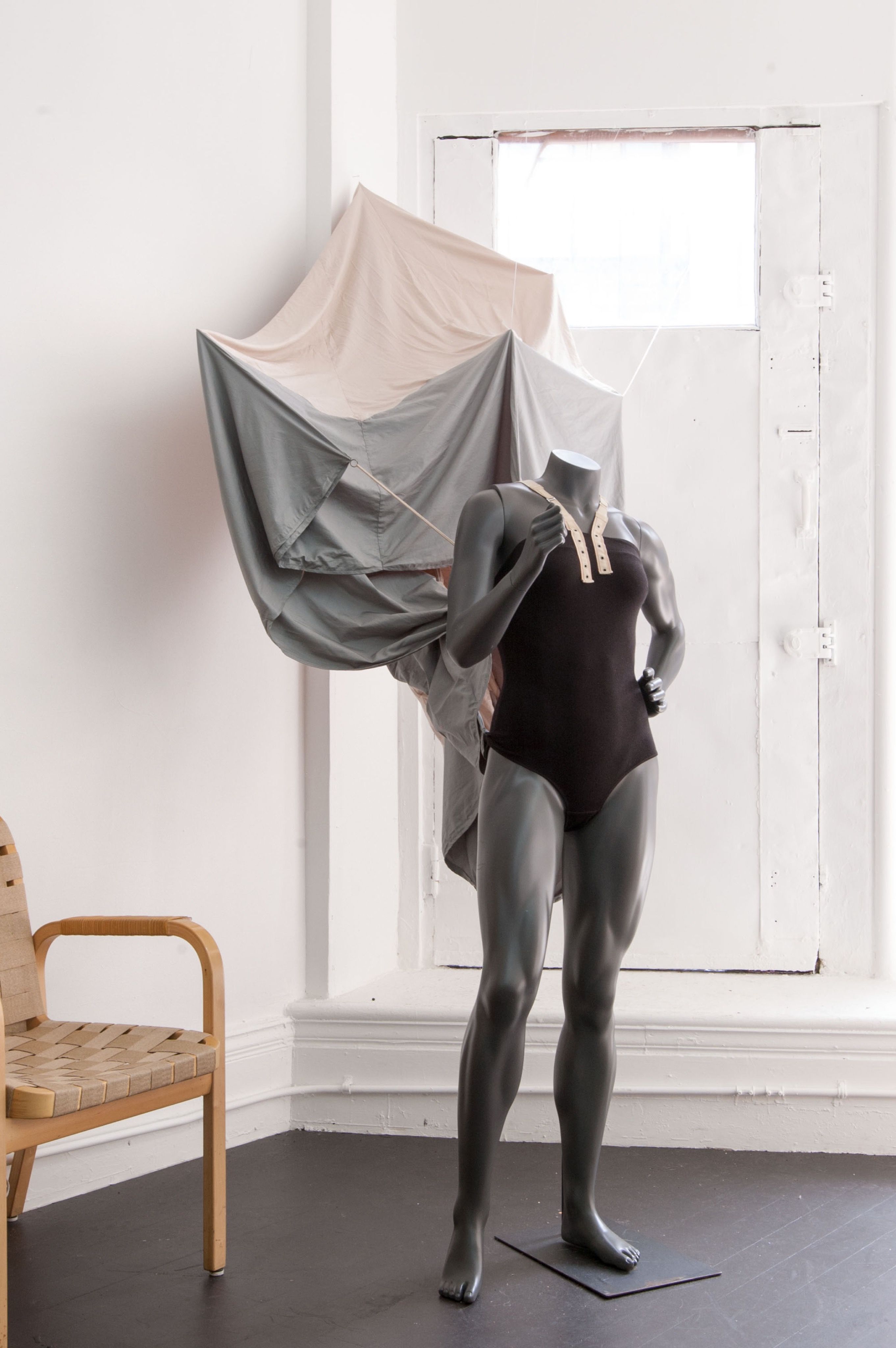
How did you start thinking about different spaces in fashion, and do you focus on particular ones in your curatorial and theoretical work?
In my last year of fashion school I started a club night with a friend. It was irregular and sporadic, and happened at a different location each time. It only lasted for about 12 months, but it was foundational in my thinking of shaping “fashion experiences”, or what you might want to call “curating.” For each night, we enforced the strict dress code “Fabulous or Filthy” as a way of contouring the fashion of the night. We always employed door bitches with an “editorial eye”, and we were really quite strict in terms of door policy. It was a debaucherous affair mixed with these interventionist fashion performances running throughout the night. The last one was probably the most epic; it was in this derelict, abandoned, three-story shop front on Smith Street, one of the main streets of the inner-northern suburbs of Melbourne – we had like a thousand people attending. The party was called Club D’Luxxx. Very 2012. This was really my only foray into clubbing — I was never a huge club goer. I’ve always been intrigued by spaces such as Mudd Club, which operated out of Tribeca in New York from 1978 to 1983, and one of its founders, Steve Mass. His role was in a sense immaterial, yet he inaugurated these highly collaborative experiences without any fixed program. Club D’Luxxx inspired me to make a store in its image, characterized by a kind of frenzied fashion ad-hoc activity.
You mention this lineage of party spaces or spaces of entertainment that circulates around fashion, either through glamour or crowd performativity, and then linking them with fashion retail spaces in the form of the concept store. How did you transfer the energy of a club night into a static space with opening hours, and where you don’t have music banging at all times? How did Centre of Style come about?
In so many ways Centre for Style was a catastrophe . . . stocktake was administered in a half torn 99-cent notepad, I.O.U.’s became the fiscal rule of thumb, events descended into depraved hang outs, and for a few months the only store music was the atrocious Meredith Monk. It also organized 40 or so events, exhibitions and performances in its three years of operation. In hysterically moving through the possibilities of how “clothing in a store” could behave, the boutique gained a symbiotic relationship with the periphery designers it hosted; a self-distancing from recognizability. Through the various strategies of deskilling, boredom and mimesis (although these monikers could certainly be stretched) the key designers we “stocked” proposed exploratory conjectures in understanding fashion’s contemporary condition and, by consequence, the widespread cultural wasteland it inhabits.
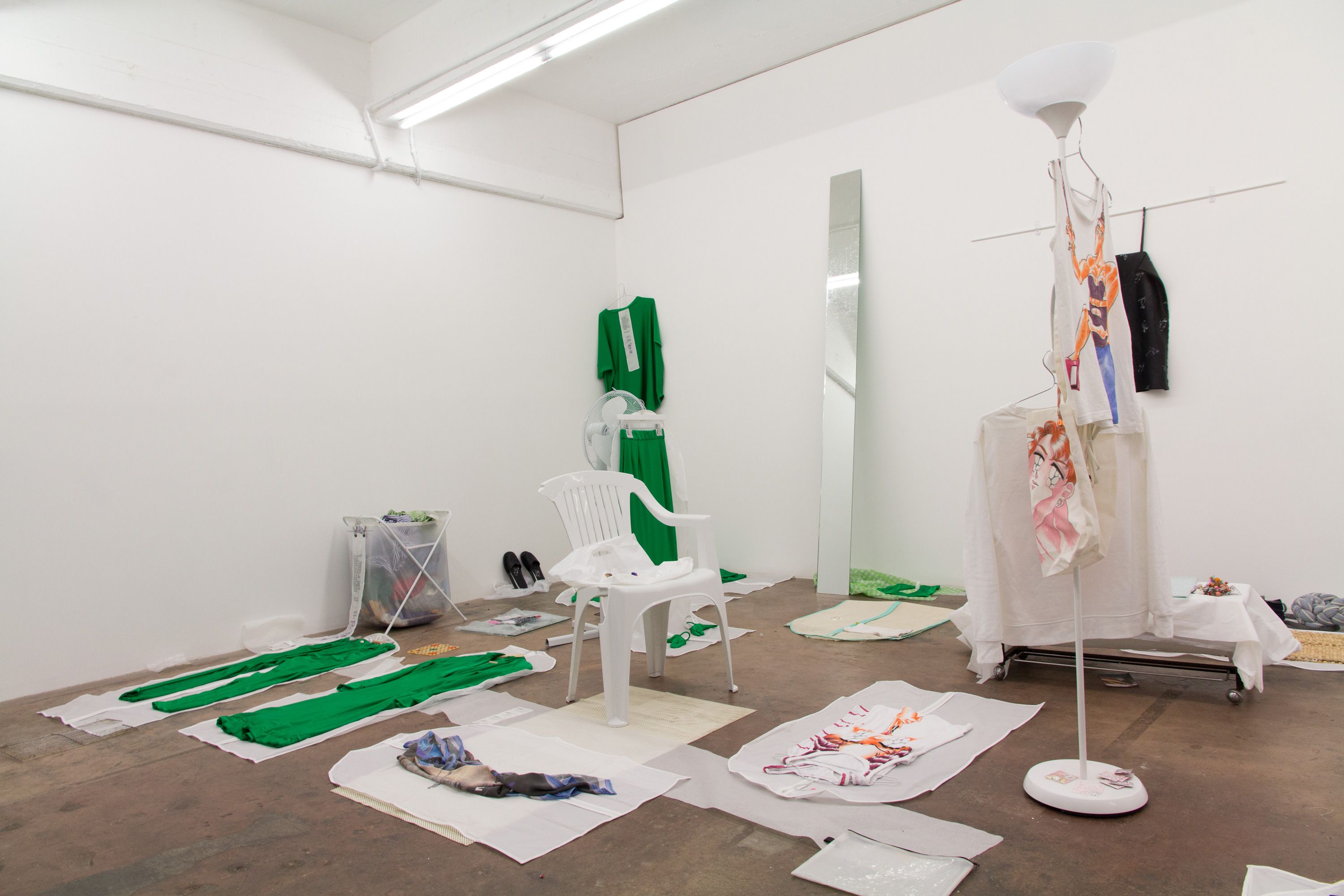
You have been talking about taking inspiration from the idea of the “alternative space” found in art or music, and applying that to fashion. What are fashion’s alternative spaces? And what would being “alternative” entail – alternative to what?
Do you mean alternative fashion stores?
Well, alternative fashion stores are, at the end of the day, not that alternative. Maybe the fashion is supposed to be alternative, but the store itself is actually completely normative in its economic and institutional behavior. Although Centre of Style wasn’t exactly premised on retail success, it examined the store as a site of fashion experience, and I think that’s why Centre for Style is interesting to discuss, and to compare it to other types of spaces through history. How did you approach the retail space as curatorial space in practice?
There have been many bonafide fashion boutiques that have influenced me, but in school I started off looking at artists’ projects, for example The House of Beauty and Culture, a collective in late 1980s London, or Tracey Emin and Sarah Lucas’ The Shop (1993). Projects like The Times Square Show that the artist collective Colab did in 1980, also involved fashion and DIY items at inexpensive prices as a quasi-organization. In discussing the conditions of space, the boutique is special in that it privileges the experience between clothing and the audience. Unlike traditional fashion boutiques, however, which are primarily concerned with wearability, Centre for Style was much more invested in the conditions of its own circulation. We explored numerous modalities of how to communicate fashion: poetry readings, installations, performances, publications, gigs and runways: all as means to “open up” how a fashion practitioner might behave. Interestingly, the “contemporary boutique” as a performative space for fashion practice is a relatively unmined field. What makes an alternative boutique? As you say, it’s contextual; it’s a constellation of many different qualities; however, if your work ethic is that of a non-profit, many important priorities will shift.
Your independent fashion curatorial work – often dealing with an “expanded” approach to fashion – has often made use of the spaces, audiences, and economies of the contemporary art world. How has art been a useful sphere for you to do your work? Is art, for someone like you, a more desirable space to be in?
Partially, it’s just convenient, and I wouldn’t say that this is an alternative positioning. Many designers have used art spaces. Think of the obvious “art-aligned” examples such as Susan Cianciolo’s performances at Andrea Rosen Gallery in the 1990s. But even brands like Proenza Schouler – run-of-the-mill, high fashion labels – often inhabit art spaces. One, because art institutions are whores to any “cultural production”, and two, these spaces are allegedly tabula rasas: they’re spaces of contemplation, so they suit fashion, which is a site of cultural enquiry. The genesis of exhibiting fashion could be traced to The Great Exhibition in London of 1851 and the Exposition Universelle in Paris in 1900, which featured the the work of Charles Frederick Worth. Since the birth of the modern fashion industry, the spaces of fashion and art have been intertwined. Paul Poiret, at the turn of the 19th century famously understood the auratic qualities of art as harmonious tactics for his experiential public relations. In terms of the structural procedures, they’re both bound by the forces of modernity – so I’m in no way unique here.
Not necessarily, but would you say that the art world is your go-to space for working, or are you still interested in the normal fashion institution?
The majority of the artworld are walking lobotomy patients. We’re a bunch of talentless, sadomasochist Clintonite philistines.
So let me ask you, then, what do you think of the fashion institution and its spaces?
My primary involvement with the “fashion institution” is the academy. The fashion program I find myself in is a progressive and exploratory environment with lots of exceptional research and scholars. I remain very curious, as I am cautious, of universities in terms of their pedagogical institutionalization of “critique”. It is also clear that over the past few decades the global policies of deregulation and privatisation, in varying but permanent degrees, have transformed the university from a public good into a knowledge economy. Adopting free-market ideologies, students are handled as customers, and academics as service providers; all competing for bits of human capital. But, you gotta be in it to win it, right?
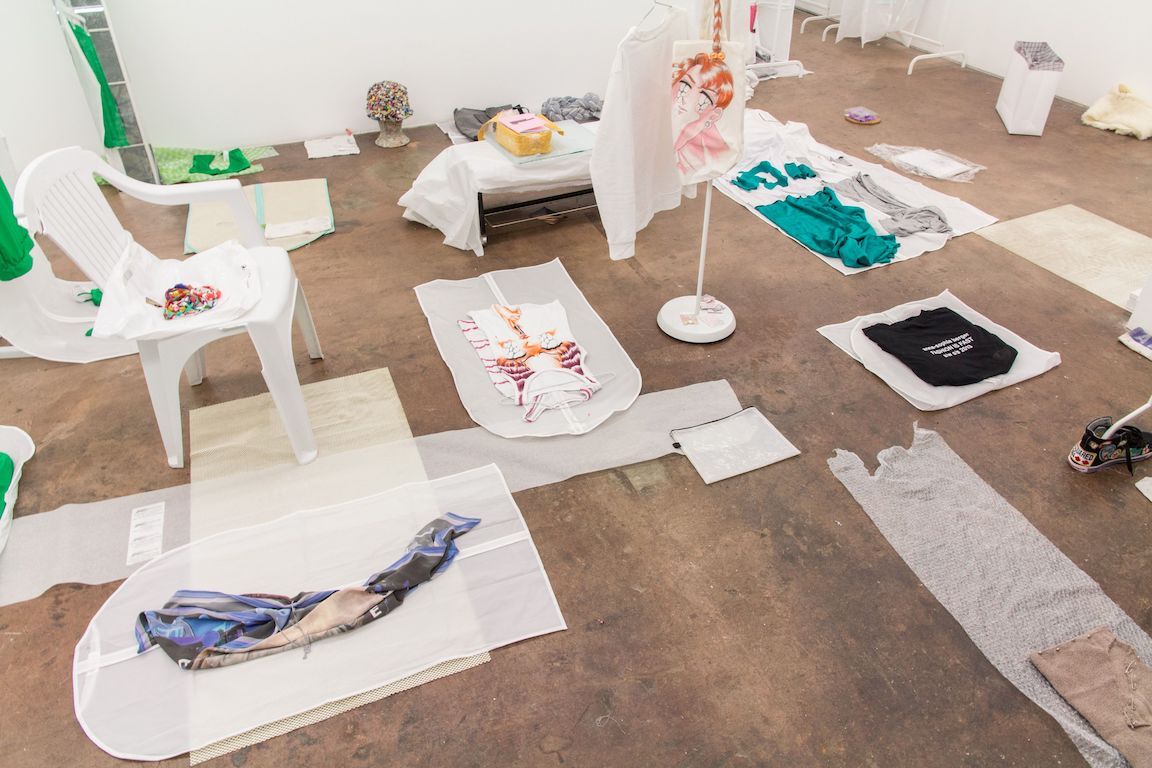
Institutional fashion curating seems to still be in a existential and methodological crisis – between material/costume history, and a modernist art history privileging the work of the fetishized author. What about the fashion museum? I wonder if you feel that it’s a place you have access to, but also if it remains is a goal for you — do you see yourself in a fashion museum, as a curator?
One third of my PhD is dedicated to Fashion Curating even if I position my practice outside of it. Of course it parallels this, so I can’t ignore it. There have been many important figures and moments in fashion’s curatorial history for me, in which curators have experimented with the medium. It’s funny, looking back to the images of Charles Frederick Worth’s exhibition from 1900, it literally appears as an exhibition from today, exemplifying the stasis of our field. For me, the fashion boutique is a party space. So, some of these exhibitions bore me to death; clothes on a mannequin, in a vitrine, or on a plinth, with some kind of didactic mark. I would also be lying if I said that I don’t enjoy some of these exhibitions. It’s no massive ode to the curator, but I can still encounter a revelatory experience in front of a dream-laden dart manipulation of a Charles James suit. This traditional “Exposition Universelle” approach is also one that appeals to the wider public, which these institutions have a fiduciary duty to please. In terms of smaller, more experimental fashion institutions, there are several I could point to. The most famous being Antwerp’s MoMu, which has had a handful of exhibitions that have pushed the field of exhibition making. I think of for example Yohji Yamamoto’s “Dream Shop” where people could come in and wear toiles from his previous collections.
This comes back to the idea of fashion as a lived experience, as opposed to the static, dead space of the exhibition. The museum-as-mausoleum is a popular and often reiterated theme in curatorial and museological theory in art, but I think it really comes to the forefront when you contrast the museum with something as lively as fashion. I think it’s a tension that one feels in your NYC exhibition The Overworked Body as well as your Passageways in Bern: how to examine liveliness, but also, how to represent it retrospectively in an exhibition space. What do you think of this historical re-enactment in the fashion exhibition context?
There’s the famous quote by Elizabeth Wilson: “For clothes are so much part of our living, moving selves, that frozen on display in the mausoleum of culture, they hint at something only half understood, sinister, threatening; the atrophy of the body and the evanescence of life.” While this might be true, curating fashion is also a unique mode of knowledge production, not merely an addendum to the vivacity of “the street”. I’m also skeptical of event-based culture, that things need to be “moving” to quantify liveliness or worse, radicality. Richard Martin, former curator at the Museum at the Fashion Institute of Technology and the Costume Institute at the Metropolitan Museum of Art, is an excellent example of a progressive fashion curator that also didn’t rely on the contemporary crutch of relational aesthetics. His 1986 exhibition The East Village rounded up a cohort of rag-tag artists of the East Village to make a provisional fashion show. Three Women, another exhibition he did with Harold Koda, in 1987, looked at the work of Madeleine Vionnet, Claire McCardell, and Rei Kawakubo. They presented these designers, which would be in any museum collection, as an impressionist embodiment of 20th century fashion history. It was completely imaginative as an exercise in (re)authoring historicism. And to be clear, there were no performances, no “interactivity”, no screens; there were simply mannequins in a room. What was interesting is that all the designs were kaleidoscopically and disorderly compressed into this one flat space, allowing for an exploratory journey amongst the sea of white, black and grey ensembles. This “exhibition-as-artwork” logic also pioneered by the impresario Diana Vreeland, eventually made its way into The Overworked Body: an anthology of 2000s dress. This exhibition set out with the audacious question: how to define a recent history of fashion? It problematized the periodisation of time by addressing fashion from the 2000s as overloaded and “overworked.” The exhibition exploited the retrospective ambiguity of the 2000s to explore the inherent slippery nature of periods. Both The Overworked Body and Passageways involved performance too.
What kind of institutional change or change in fashion spaces do you think would be useful? What would have to change to accommodate the fashion spaces you want to produce and work in?
Given that the critical weight of any institution is dependant on its experimentation and unique difference, it’s strange how uniform these museums are, not to speak of the countless travelling fashion blockbuster exhibitions they all “host”. Then again, why expect anything else? Institutions, by their very definition, are inherently conservative. Their relevance achieved only by responding to the lethargic piecemeal reform of “culture”, not by moving beyond or outside of it. Even magazines like this only serve to reinforce fashion institutionality, strategically balancing a ratio of insider-traders and “critical” tastemakers.
One reason why so many young fashion designers exhibit their work at art institutions (eg. Eckhaus Latta at the Whitney, or Grace Wales Bonner at The Serpentine) is that fashion curators just do not give shows to younger and riskier designers. Many curator bureaucrats also spend their entire professional lives within the academy or museum, and are unfamiliar to provisional approaches or marginal practices. There are also other institutional concerns such as attendance metrics, patronage and conservation that impose regulations.
I completely agree, and I find it paradoxical that this is the case in fashion, particularly because fashion is such a “fun” place to be in many ways; so much of fashion is premised on entertainment, on shameless fun and spectacle; it’s a shame that things get so dried up once they enter museums.
Culture has never been so exciting.
Lastly, what’s next for you?
Carrie Bradshaw at 84…
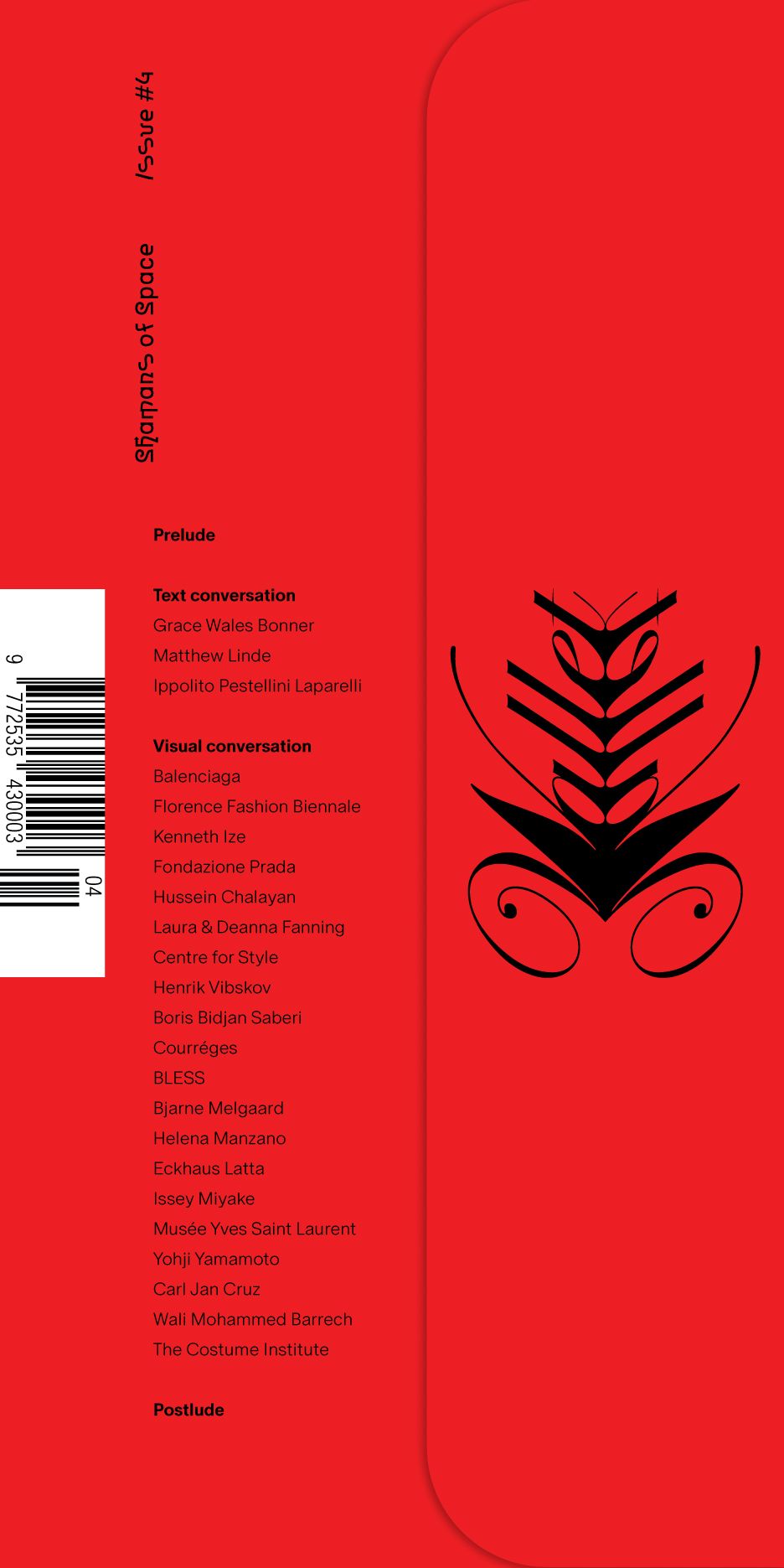
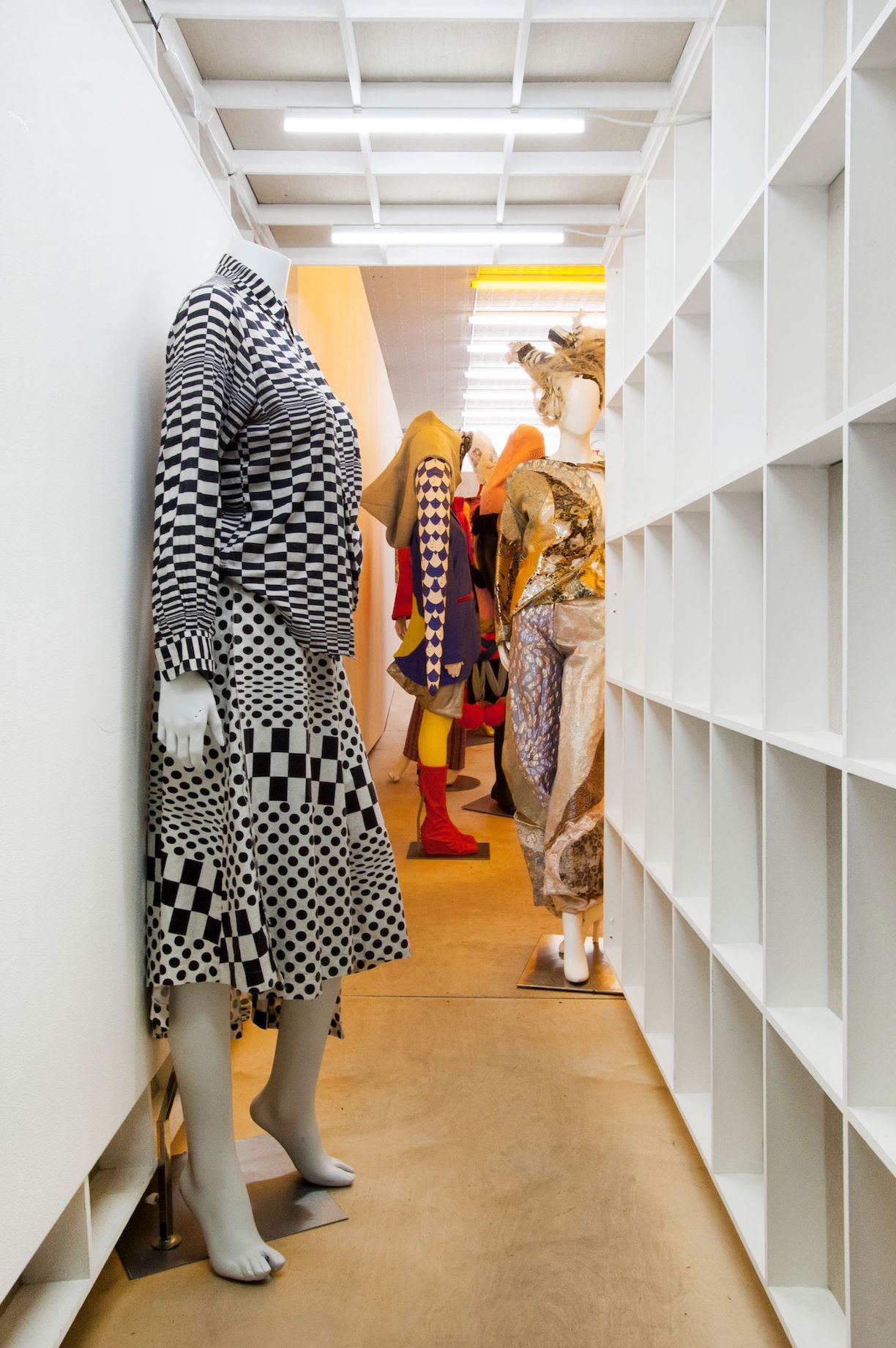
Wallet #4 is is out now and available at MoMa PS1 (New York), The Broken Arm (Paris), SlamJam (Milan), LNCC (London), The Store (Berlin) and Soop Soop (Toronto), or online at wallet-mag.com. More information about Matthew Linde’s research and curatorial projects is available at his website.
Credits
- Interview: Jeppe Ugelvig
- Cover Image: Centre for Style / Matthew Linde
